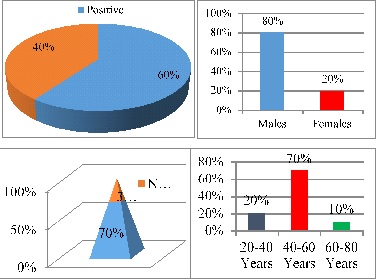Prevalence of Symptomatic and Asymptomatic Trends of COVID-19 and their Aggressiveness among Various Gender and Age Groups Due to Smoking
Abstract
 Abstract Views: 228
Abstract Views: 228
COVID-19 remains a global threat and many developed countries are still troubled by the COVID-19 pandemic. During first wave of COVID-19, about 23 million people tested positive for the virus, worldwide. Hence, the factors that contribute towards enhancing the COVID-19 burden must be assessed. In the current study, RT-PCR testing method was used for the detection of COVID-19. Specimens used to detect the infection comprised nasopharyngeal swabs. After their collection, the specimens were processed further for the extraction of RNA and PCR. About 60% of sampled patients tested positive and 40% tested negative for COVID-19 infection. COVID-19 prevalence was found to be higher in male patients than female patients. Among COVID-19 positive individuals, 70% were smokers and 30% were non-smokers. Positive cases were more frequent in the age group of 40-60 years. Moreover, only 30% of the patients showed symptoms of COVID-19. Keeping in view the above statistics, it is safe to assume that smokers are more prone to infection by COVID-19 which was found to be more prevalent in men, mainly targeting their elderly population. A major portion of COVID-19 positive patients didn’t show any symptoms. It was concluded that asymptomatic cases of COVID-19 are a silent threat to the world.
Downloads

Copyright (c) 2023 Muhammad Bilal Habib

This work is licensed under a Creative Commons Attribution 4.0 International License.
BSR follows an open-access publishing policy and full text of all published articles is available free, immediately upon publication of an issue. The journal’s contents are published and distributed under the terms of the Creative Commons Attribution 4.0 International (CC-BY 4.0) license. Thus, the work submitted to the journal implies that it is original, unpublished work of the authors (neither published previously nor accepted/under consideration for publication elsewhere). On acceptance of a manuscript for publication, a corresponding author on the behalf of all co-authors of the manuscript will sign and submit a completed the Copyright and Author Consent Form.









